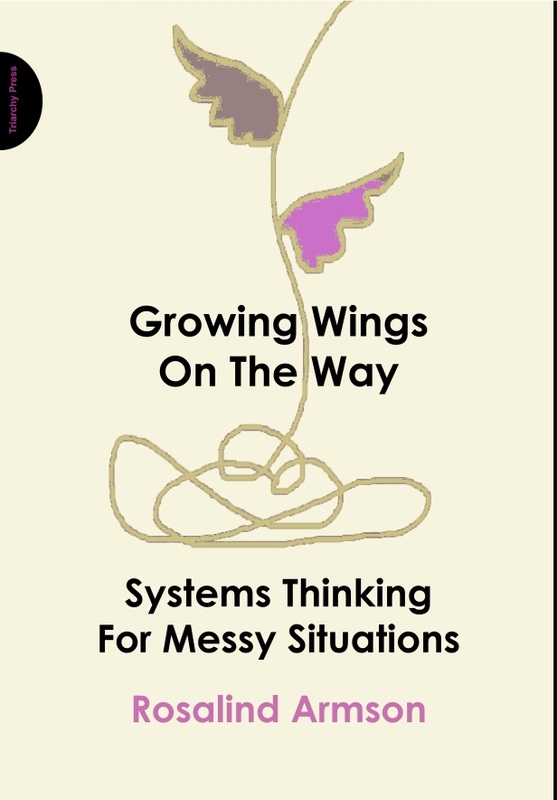Snappy SystemsThe idea of a system that does something and has a purpose, whether designed or attributed, provides a powerful way of understanding some of the complexity within a messy situation. ‘Snappy Systems’ is a technique for breaking out of taken-for-granted understandings of what something is or does. Snappy Systems is simply a rapid (hence ‘snappy’) way of generating a list of different ways of seeing something as a system with a purpose. Snappy Systems works well even if only one person is making the list but it works even better with a group of people contributing ideas. This is an example of how it works:
I have a compost bin outside my kitchen door. Vegetable waste from the kitchen, small amounts of leftover cooked food, shredded newspaper and chicken poo go in and, after several months of activity by the resident worms, I can take out clean, non-smelly garden compost to enrich the soil. Phase 1 of Snappy Systems is simply to list all the systems you can think of, as fast and uncritically as you can, that describe the compost bin, by using the form ‘A compost bin is a system to ‘. Write down every item of your list, even if it seems silly or irrelevant. Here is part of my list. A compost bin is:
Phase 2 of Snappy Systems has two list-building stages. Firstly, list as many compost-bin stakeholders as possible. A stakeholder is anyone who might have a stake in – any reason for caring about – my compost bin. Again, working fast and without self-censorship is the key. My stakeholder list includes:
Next, pick one of the stakeholders: it doesn’t really matter which one but it may work better if their stake is rather different from your own. In this case, I would choose the City Council or the worms in preference to my family since the compost bin is a family enterprise and family stakes are similar to mine. Now repeat the Phase 1 process of listing systems but this time, do it from the perspective of your chosen stakeholder. Here is part of my list constructed from what I take to be the perspective of the City Council.
I don’t need to understand fully the Council’s perspective on compost heaps in order to generate a much richer understanding of the wider context of my compost bin. Phase 3 of Snappy Systems – Sinister Systems – is optional but especially useful for exploring why things go wrong. This time the ideas-storm concentrates on systems causing things to go wrong. In other words, each system in the list has the ‘purpose‘ of creating unwanted effects. My compost bin rarely goes wrong but here are some of my sinister systems.
Sinister Systems suggests the existence of systems I do not want and invites me to explore how they work and how to sabotage them in messy situations. It also alerts me to some possible unintended consequences of systems I identify. Using Snappy Systems, and its variants, I begin to discern interlocking systems within the messy situation; the mess begins to acquire a structure. The idea that a system does something is closely allied to its purpose . ‘Doing something’ can be used as another way to clarify a messy situation by identifying systems within it. A system transforms something. The transformation it performs is the ‘doing something’ and is a key characteristic of the system. The system takes something in one state and transforms it into another state. This simple statement creates a tool, the ITO model , which challenges the user to be very clear and simple about what the transformation is. The ITO – Input, Transformation and Output – model is simply a diagram of a system transforming an Input into an Output. It is sometimes called an input-output diagram, although that term is less precise. The input is something in one state or condition. The output is the same thing in a different state or condition, transformed by the system. Here is the generic ITO model and, below it, a ‘toasting system’ that transforms bread into toasted bread. Snappy Systems are further explained and shown in the context of Systems Maps in Chapter 8 of Growing Wings on the Way. |
More about the book:
Book Homepage
Buy the book Diagrams/Images from the Book Tools & Techniques (Extracted from the book): Rich Pictures Mental Traps Diagrams Complexity Identifying Themes Snappy Systems System Definitions Systems Thinking Skills (Extracted from the book): Enthusiasm Humility Respect Further Resources The Author Author video Read the Introduction Related Titles: The Search for Leadership |

